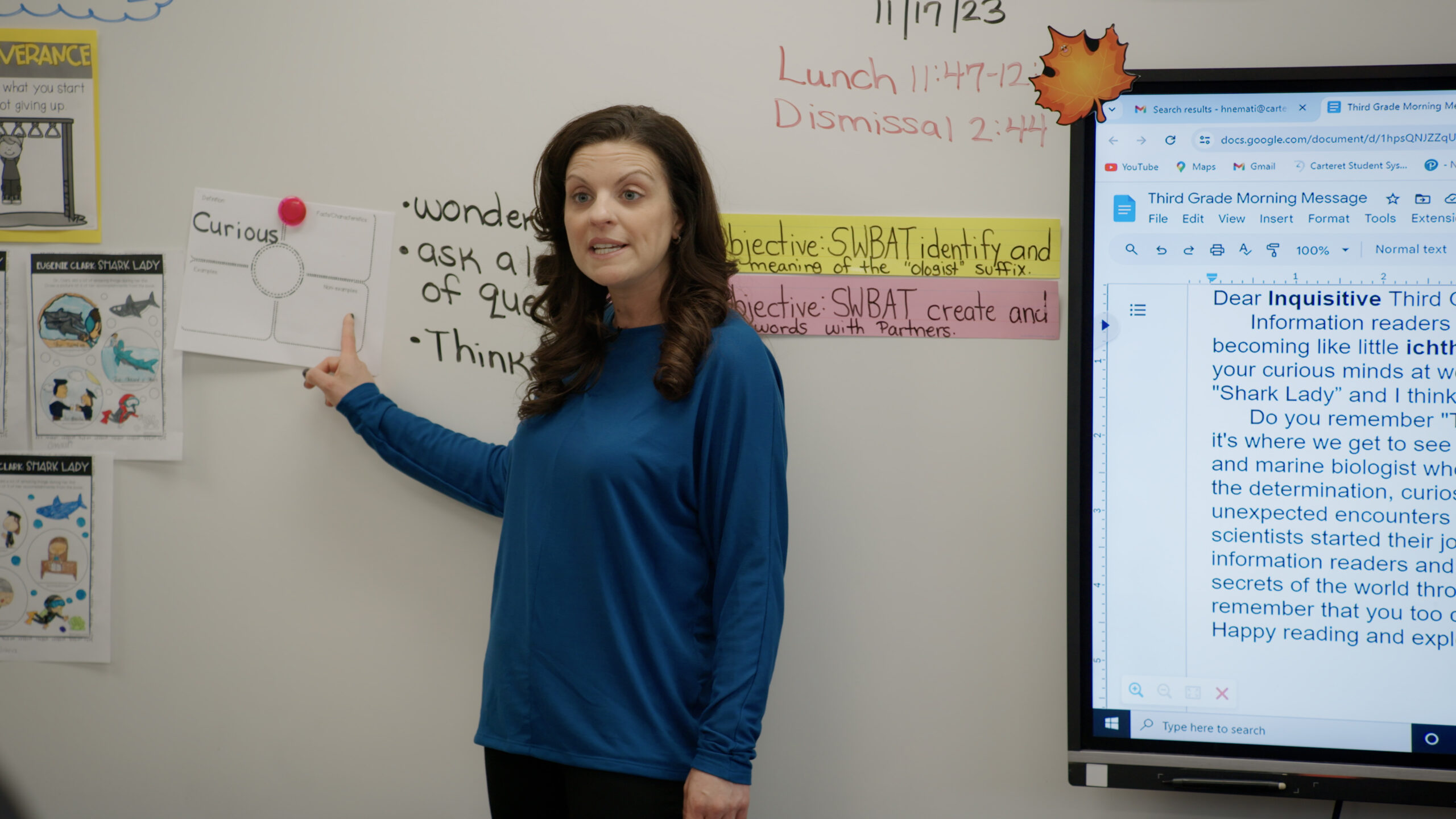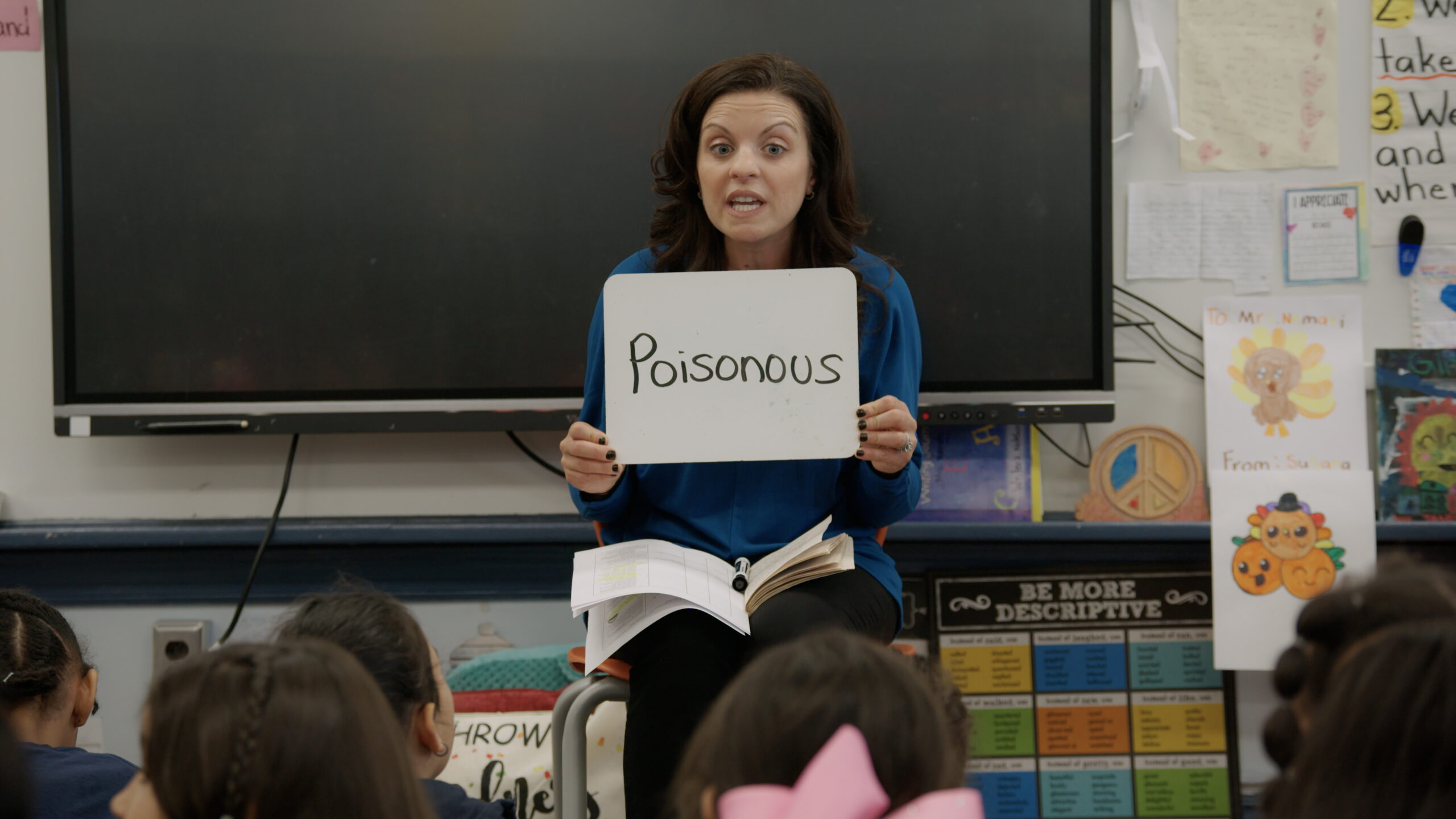Tools for Vocabulary Acquisition
Overview
The teacher models a routine for focusing deeply on a vocabulary word by breaking down the word pronunciation, discussing word origin, discussing a simple meaning, and connecting to sentence writing. The students work in partners to co-create and independently write sentences using the tier two vocabulary word.
Key Take-aways
•Utilize vocabulary routines for decoding and breaking apart multisyllabic words and discussing the root word and affixes.
•Practice sentence writing often during reading and vocabulary instruction to infuse components of comprehension to build content knowledge, and understanding of sentence structure and syntax.
•Bringing in consistent sentence writing in short, manageable chunks builds writing stamina while reducing the cognitive load of long-form writing during writing blocks.
Transcript
Dr. Ken Kunz: There are countless tools for vocabulary acquisition that can be used in the classroom, including definition and word maps. Students review the word of the day, learn about its origin, pronounce and syllable. Divide the word and think of simple definitions. Students also have an opportunity to be sentence builders as they construct sentences with seven or more words and context clues.
Teacher: We are going to talk about the word of the day, and we’re going to use our word poisonous. Can you say poisonous?
Student(s): Poisonous.
Teacher: You all really liked that word? Poisonous. Okay. We are going to talk about the parts of the word poisonous. So if you notice the word has a suffix at the end of the word. OUS. That’s a suffix. Okay? It means full of the origin of this word. It comes from the French, okay? That’s where it comes from, and it means evil potions. Alright? Let’s look at this word pronunciation. Can we say that?
Student(s): Pronunciation
Teacher: That’s how you pronounce the word. Put your pencils down for one second. I want you to clap out the syllables for poisonous
Student(s): Poi/son/ous
Teacher: Three syllables. So I want everybody to write this. This is how, and I’ll explain it in a minute. poi-zuh-nuhs. That’s how you pronounce the word poisonous. Let’s look at the pronunciation. We’re going to say
Student(s): poi-zuh-nuhs
Teacher: Poisonous.
Student(s): Poisonous
Teacher: Who remembers the definition of poisonous from when we were reading? What did we talk about? What does poisonous mean? We know when something is poisonous, it’s toxic. Okay, so write toxic. And you are going to make a seven-up sentence. That means that your sentence should have seven words in it. So that’s how you could count when you’re making your sentence seven words. Okay? That’s why it’s called a seven-up sentence. You are going to use the word poisonous in your sentence. If I read this sentence and I didn’t know what the word poisonous meant, a spider or a snake can have poisonous venom. I know that venom is something that’s not really good to have, so it kind of makes me think that poisonous might mean something that is toxic or not good for you. It says seven-up sentence. When you create a seven-up sentence, you can make a sentence with seven or more words. Okay? So it could be seven words, eight words, nine words. So now that you have an example of what this sentence should look like, now you can try to create your own. Still, use poisonous, but try to make your own sentence now. Okay. Jaden said, Eugenie Clark studied poisonous fish in her lab. Even though it’s eight. We could still use it. It’s a great sentence. So scarlet, when you’re counting your words, just count the words, not the syllables. So poisonous has three syllables, but it’s one word. Listen. So you can say A poisonous, poisonous dart frog lives in trees. Okay. See how that’s seven words? Or just write it underneath. Okay. Good job.


